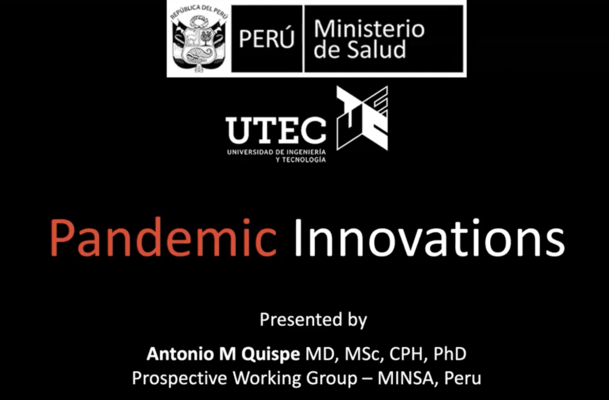April 29, 2020 LAN Biweekly Call Summary and Recording.
Africa CDC COVID-19 Situational Update:
The webinar began with Diana Silimperi, an international public health pediatrician and epidemiologist, giving a COVID-19 situational update. The highest concentration of cases as well as the highest case fatality rates are largely in the northern part of Africa, and the countries with the highest number of cases are: Egypt, South Africa, Morocco, Cameroon, and Algeria. While testing is still on the rise in Africa, South Africa has reached 10,000 tests per day and Uganda is prioritizing key segments of the population such as long-distance truck drivers. Like all countries across the world, many nations are struggling with the decision to reopen their economies. Some of these decisions have led to innovative repurposing of certain industries, as some manufacturers in Kenya and South Africa now focus on manufacturing masks, hand sanitizer, and ventilators. Soon, the World Bank will be rolling out its fast-track funding program of $1.9 billion in 25 countries and expect to deploy $160 billion over the next 16 months. Additionally, PATH recently released a new webpage, “Resources to Support COVID-19 Responses in LMICs” which offers projections on disruptions to essential health services, key technical and policy guidance for LMICs, and best practices regarding maintaining essential services and supporting data-driven decision-making.
COVID-19 Preparedness Peru (7:05-29:25)
Antonio Quispe is a research professor at both Universidad Continental School of Medicine and Universidad de Ingenieria y Tecnologia, who is now advising Peru’s Ministry of Health as a member of its National Prospective Committee for COVID-19 relief efforts. As part of this role, he is working on four studies that aim to improve Peru’s preparedness and awareness of the pandemic. His presentation focused on the wide scope of innovations currently employed to address COVID-19, and the challenges of creating a theoretical framework in such an unprecedented time. As of April 29th, the total number of cases and number of deaths by COVID-19 in Peru duplicated every 10 days, while the number of deaths by all causes duplicated every 5 days. According to some mathematical modeling, the rate of transmission before any restrictions was estimated to be about 1.2 - 2.2, while after the first hammer of restrictions it was 0.9 - 2.3, and after the second hammer of cluster containment restrictions it was 0.4 - 1.3. Though the country has one of the highest rates of adherence to the new restrictions, the number of cases is quickly reaching the country's maximum capacity. Dr. Quispe then highlights the many ways Peru is assessing this information. These innovative techniques include, but are not limited to: using remote satellite and Google data, mobile phone antennas, NO2 concentrations, and drone surveillance to measure peoples’ mobilization and interactions. Dr. Quispe also speaks to the technological innovations of other categories, such as epidemiology, prevention, diagnostics, treatment, scientific communication, and post-pandemic recovery. To end the webinar, Dr. Quispe led a Q&A segment that posed questions asked by participants. One participant asked, “What are the plans for reopening the economy?”.
Flash Presentations: Solutions, Insights, and Lessons Learned (29:37-
Noora Health (30:20): In response to COVID-19, India-based Noora Health has created 16 health behavior change modules to ensure the dissemination of evidence-based information and best
practices, particularly regarding care for at-risk groups such as pregnant women and those with medical conditions. These resources are available for download on their website, www.noorhealthcovid19.org/. They have also launched a HealthAlert WhatsApp chatbot in Bangladesh to provide people with real time, localized COVID-19 information.
Project Echo (40:00): Project ECHO is an organization that utilizes telementoring to democratize medical knowledge, train health workers and increase medical capacity across the world. Since the COVID-19 outbreak, it has trained over 175,000 healthcare professionals about the spread and treatment of the virus, and is proposing further expansion of its network in order to meet the current demand. For more information, go to http://echo.unm.edu/covid-19.
Babylon Health (49:43): As a digital healthcare company focused on making healthcare accessible and affordable, Babylon Health has created a COVID-19 Response Funnel to its app users. The Response Funnel consists of 6 services: informing, deciding, connecting monitoring, consulting, and referring users to information and health professionals. Additionally, the company has introduced COVID-19 related services to its national digital healthcare service in Rwanda, “Babyl,” such as interactive voice responses to FAQs and follow up of COVID-19 patients who need clinical monitoring.

